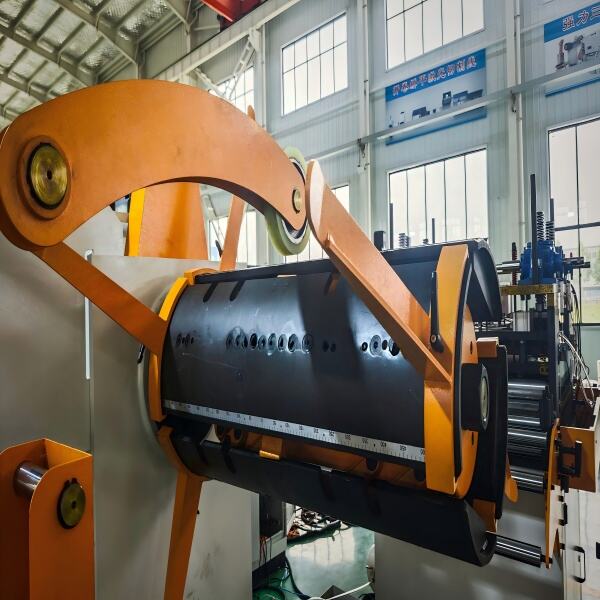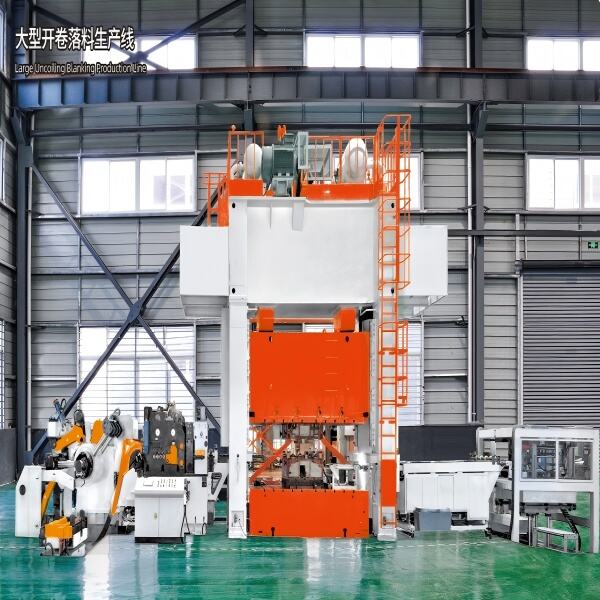Revolutionizing Manufacturing with Advanced Blanking Technology
The manufacturing industry continues to evolve with innovative solutions that enhance productivity and streamline operations. Among these advancements, the three-in-one blanking production line stands out as a game-changing technology that transforms how manufacturers approach metal processing. This integrated system combines multiple operations into a single, efficient production line, offering unprecedented advantages in terms of speed, precision, and cost-effectiveness.
Modern manufacturing demands increasingly efficient solutions to maintain competitiveness in a global market. The three-in-one blanking production line addresses these challenges by incorporating feeding, leveling, and blanking processes into one seamless operation. This integration not only optimizes floor space but also significantly reduces production time and labor requirements.
Core Components and Functionality
Integrated System Architecture
The three-in-one blanking production line comprises sophisticated machinery working in perfect synchronization. The feeding mechanism ensures consistent material flow, while the leveling system guarantees flatness and dimensional accuracy. The blanking process then executes precise cuts according to programmed specifications. This harmonious integration eliminates the need for manual material handling between separate machines, reducing the risk of damage and improving overall efficiency.
Advanced control systems coordinate these components, enabling real-time adjustments and monitoring. The automation level achieved through this integration ensures consistent quality across production runs, minimizing variations that often occur in traditional separated processes.
Technological Innovations
Modern three-in-one blanking production lines incorporate cutting-edge technologies such as servo drives, precision sensors, and advanced automation controls. These innovations enable quick changeovers between different material specifications and production requirements. The system's intelligent controls can automatically adjust parameters based on material properties, ensuring optimal performance regardless of the workpiece characteristics.
Digital integration capabilities allow these production lines to connect with manufacturing execution systems (MES) and enterprise resource planning (ERP) systems, facilitating data-driven decision-making and predictive maintenance strategies.

Operational Benefits and Efficiency Gains
Production Speed and Output Quality
The three-in-one blanking production line significantly accelerates manufacturing processes by eliminating transfer times between separate machines. This continuous operation can increase production speeds by up to 40% compared to traditional setups. The integrated quality control mechanisms ensure that each piece meets exact specifications, reducing scrap rates and rework requirements.
The system's ability to maintain consistent processing parameters throughout the production run results in superior product quality. This consistency is particularly valuable for industries requiring high-precision components, such as automotive and aerospace manufacturing.
Cost Reduction and Resource Optimization
Implementing a three-in-one blanking production line leads to substantial cost savings across multiple areas. Labor costs decrease due to reduced operator requirements and simplified workflow management. Energy efficiency improves through the elimination of redundant equipment and optimized power consumption patterns. Additionally, the compact design minimizes the required floor space, allowing manufacturers to maximize facility utilization.
Material waste reduction is another significant advantage, as the integrated system optimizes material usage through precise control and automated nesting capabilities. This efficiency translates directly to improved profit margins and reduced environmental impact.
Implementation Strategies and Best Practices
Planning and Integration Guidelines
Successful implementation of a three-in-one blanking production line requires careful planning and consideration of existing manufacturing processes. Organizations should conduct thorough assessments of their production requirements, material specifications, and facility capabilities before selecting the appropriate system configuration. This evaluation ensures that the chosen solution aligns with both current needs and future growth plans.
Training programs for operators and maintenance staff are essential components of the implementation strategy. These programs should cover not only basic operation but also troubleshooting procedures and preventive maintenance protocols to maximize system uptime and longevity.
Optimization and Maintenance Protocols
Regular maintenance and optimization routines are crucial for maintaining peak performance of the three-in-one blanking production line. Implementing predictive maintenance strategies using data analytics helps prevent unexpected downtime and extends equipment life. Establishing clear standard operating procedures ensures consistent operation across different shifts and operators.
Performance monitoring and regular calibration checks help maintain optimal production parameters. These practices, combined with systematic documentation of maintenance activities, create a robust framework for sustained operational excellence.
Future Trends and Industry Impact
Emerging Technologies and Integration
The evolution of three-in-one blanking production lines continues with the integration of Industry 4.0 technologies. Machine learning algorithms are being developed to optimize processing parameters automatically, while artificial intelligence systems help predict maintenance needs and potential quality issues before they occur. These advancements promise even greater efficiency gains and reduced operational costs.
The increasing focus on sustainability in manufacturing aligns perfectly with the efficiency advantages of integrated blanking systems. Future developments are likely to emphasize energy efficiency and material optimization even further, contributing to greener manufacturing practices.
Market Adaptation and Growth
As more manufacturers recognize the benefits of three-in-one blanking production lines, the technology continues to evolve to meet diverse industry needs. Customization options are expanding to accommodate different material types and production requirements, making these systems accessible to a broader range of manufacturing applications.
The market for integrated blanking solutions is expected to grow significantly in the coming years, driven by increasing demand for efficient, automated manufacturing solutions and the push toward smart factory implementations.
Frequently Asked Questions
What maintenance requirements does a three-in-one blanking production line have?
Regular maintenance includes daily inspections of critical components, scheduled lubrication, calibration checks, and periodic replacement of wear parts. Most systems require comprehensive maintenance checks every 2,000-3,000 operating hours, though specific requirements vary by manufacturer and usage intensity.
How long does it take to implement a new three-in-one blanking production line?
Implementation typically takes 3-6 months, including installation, testing, and operator training. This timeline can vary based on facility readiness, system complexity, and integration requirements with existing manufacturing processes.
What is the typical return on investment period for this technology?
Most manufacturers achieve ROI within 18-24 months of implementation, depending on production volume and existing operational costs. Factors affecting ROI include reduced labor costs, improved material utilization, increased production speed, and decreased maintenance requirements compared to separate machines.

